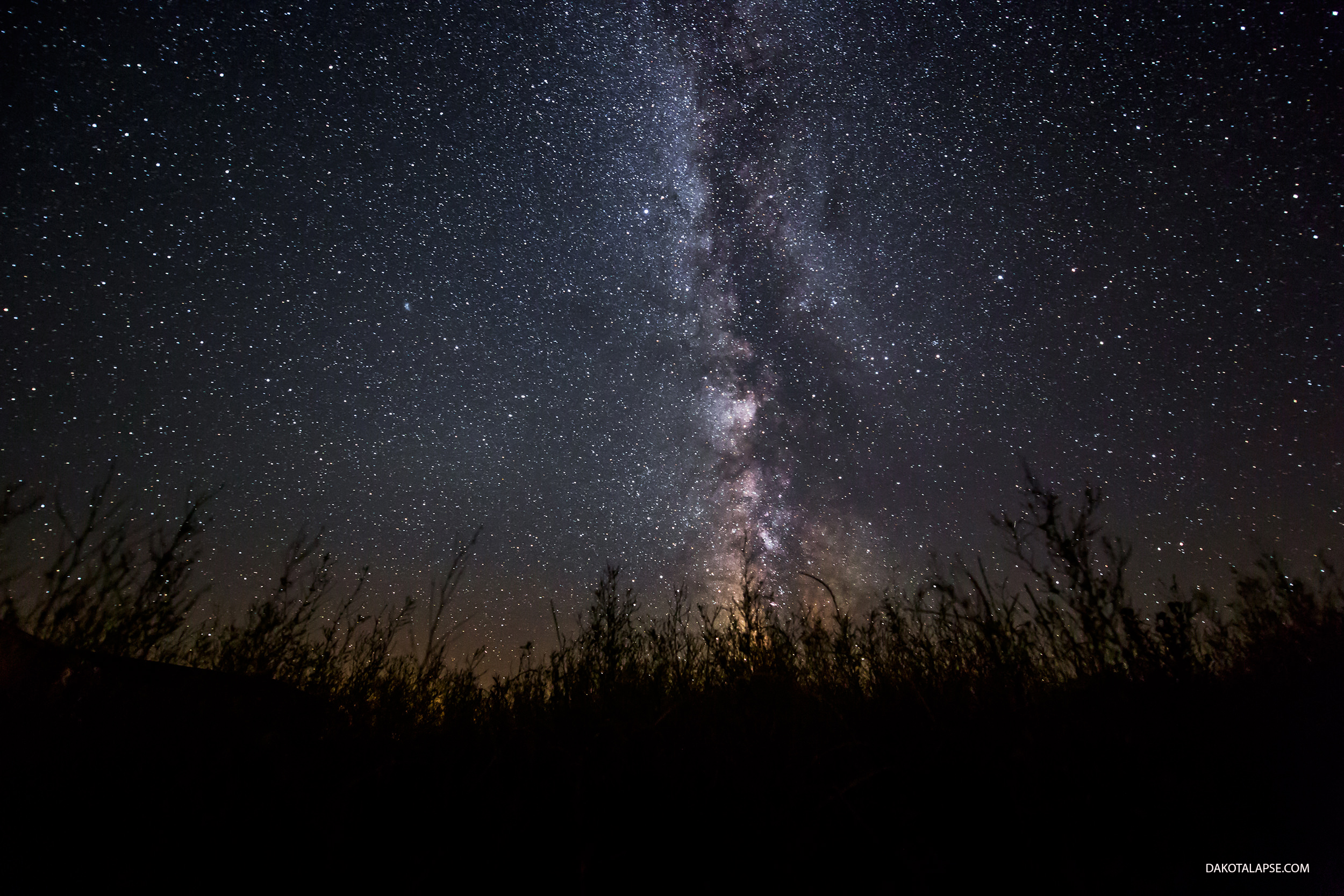Remember at the end of “Star Trek: First Contact” when Lily looks up to see the Enterprise enter the temporal vortex with a flash of light? Astrophotographer Randy Halverson captured a view very similar to that scene, albeit without time travel or Vulcans standing nearby.
“On July 28th, 2014, I was set up to shoot the Milky Way near Kennebec, South Dakota,” Halverson wrote on his website. “I had looked through some of the stills but didn’t notice anything unusual. [But] in December 2014 I was editing timelapse and when I got to the July 28th sequence I noticed something different on it. At first I thought it was another meteor with persistent train, but I had missed the meteor in between exposures. I had already caught several meteor with persistent trains on timelapse last year, so I was watching for them. Then I looked closer and noticed the flash was dimming and getting brighter. Also, when I zoomed in I could see a satellite or object right before the first flash.”
Halverson did a quick search of launches during that time and found the Air Force had launched a semi-classified trio of satellites into orbit earlier in the evening of July 28th (23:28 UTC, 7:28 EDT) on a Delta IV rocket from Cape Canaveral Air Force Station, and further research indicated he had captured the engine burn of one of the satellite’s final boost stage.
Just goes to show, you can never tell what you’ll see when you’re looking up!
See the timelapse below:
On board the Delta IV were two Geosynchronous Space Situational Awareness Program (GSSAP) spacecraft and the Autonomous Nanosatellite Guardian for Evaluating Local Space (ANGELS) NanoSatellite. Halverson conferred with a few NASA mission analysts and they all agreed the flash was coming from the ANGELS boost stage firing.
“The first flash you see on the timelapse happened at 1:09am July 29th (camera time) so that also seems to match up with the timing for the final burn the article mentions,” Halverson said.
According to the Spaceflight101 website, the ANGELS nanosatellite is a project of the U.S. Air Force Research Laboratory’s (AFRL) and was a secondary payload on Delta IV launched on July 28, 2014. Its purpose was to do a technical demonstration flight several hundred kilometers above the belt of geosynchronous orbit (35,786 kilometers (22,236 miles). The satellite was supposed to “perform an autonomous rendezvous demonstration with the Delta IV upper stage before testing a camera system for the inspection of satellites in high orbits.”
Halverson said he used a Canon 5D Mark III with a Nikon 14-24 lens on an eMotimo TB3 mounted on a Dynamic Perception Stage Zero Dolly.
See more of Randy’s great timelapse and night sky photography work at his website dakotalapse, or Twitter.

